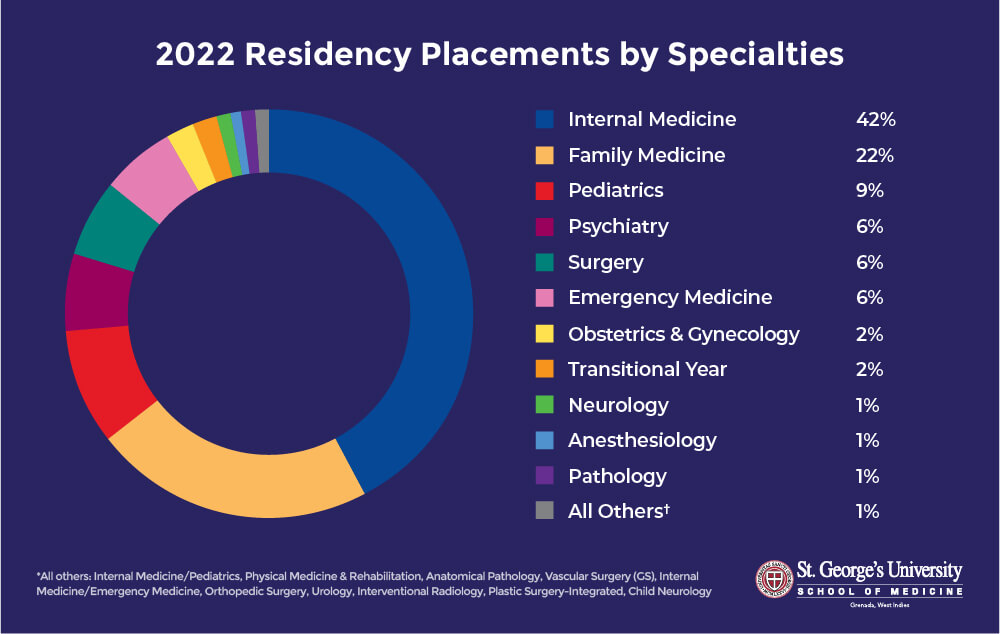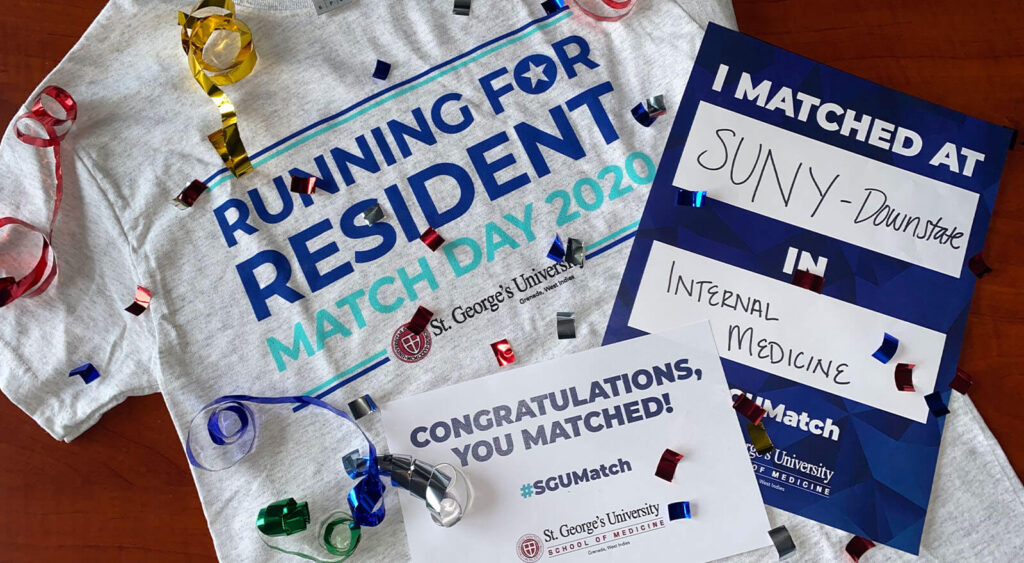While your drive to become a doctor has you actively working on your applications, you may already have your sights set on your next goal: securing a medical residency. You know the importance of this moment, which is why residency placement rates are on your list of criteria for choosing a medical school. If you’re considering the St. George’s University (SGU) School of Medicine, you’re in luck.
We enlisted Dr. John Madden, an emergency medicine–trained physician who serves as the school’s associate dean of students and director of the Office of Career Guidance and Student Development, to help us outline some information about SGU residency placements that might interest you.
6 notable SGU residency facts to keep in mind
Physicians who attend St. George’s University undergo dynamic training that can equip them for a range of different post-graduate training options. Consider the following information about the SGU match rate.
1. The SGU residency placement rate is consistently strong
Most medical schools talk about residency placement rates as opposed to the total number of residencies secured, which makes it easier to compare programs of different sizes. The SGU match rate for eligible graduates over the last three years is 93 percent.1 These placements have spanned 20 specialties, including internal medicine, orthopedic surgery, pathology, anesthesiology, and child neurology.

2. SGU has become the largest provider of new doctors into US residencies
For the eighth year in a row, SGU was the number one provider of doctors into first-year US residencies.2 This includes over 990 new residency placements as part of the 2022 SGU match list.2
3. More than 70% of SGU grads pursue primary medicine
The United States is on the cusp of a major physician shortage affecting numerous specialties. For primary care providers in particular, the Association of American Medical Colleges (AAMC) predicts the shortage will fall between 21,400 and 55,200 by 2033.
SGU is committed to addressing those future healthcare needs by encouraging interest in primary care. This approach has led to more than 70 percent of SGU graduates starting out in these fields. “It’s something we shout from the mountaintops,” Dr. Madden says.
Primary care specialties, which include internal medicine, family medicine, OB/GYN, and pediatrics, typically have more spots available than fields like orthopedic surgery or anesthesiology. For many SGU students, pursuing primary care is a conscious decision that will allow them to serve in a much-needed role.
4. SGU graduates have also secured highly competitive residencies
While many SGU graduates pursue primary care medicine, there are certainly those who gain acceptance to residencies for some of the most competitive specialties. Also consider that some students complete a primary care residency en route to a competitive fellowship.
SGU graduate Dr. Andrew Roorda, now a gastroenterologist, is a shining example. “St. George’s made me resilient,” he says. “In your clinical years, you get to go to a lot of different hospitals. It taught me how to adapt quickly to new settings.”
“St. George’s made me resilient. In your clinical years, you get to go to a lot of different hospitals. It taught me how to adapt quickly to new settings.
5. Even grads who don’t initially match can obtain positions
Most medical students obtain residency placement through the National Resident Matching Program’s Main Residency Match, but not every student does. Applicants who didn’t match can participate in the Supplemental Offer and Acceptance Program to get placed into an unfilled position. They can also seek an alternative path.
Dr. Madden recommends that students who don’t get placed through the Match process email a PDF of their application to residency coordinators. It could prove beneficial if a program ends up with one or more unanticipated openings. “One year, we had about 40 students secure spots using that method,” Dr. Madden says.
6. SGU residency positions are secured all over the United States
Now that you know about the SGU match rate, you may be curious: Where do SGU grads secure residencies? It’s worth noting that some states offer many more residency slots than others. It makes sense that a significant number of SGU graduates would attend residencies in those locations.
Even still, SGU graduates consistently secure residency placements across the United States. The 2022 SGU match list includes placements across 41 US states and the District of Columbia.3 To see this information for yourself, you can browse our residency placement information as far back as 2001.

Plan your path to residency with SGU
Upon reviewing the details surrounding SGU residency placements, it’s clear the School of Medicine MD program is serious about helping students become successful physicians. From highly respected instructors to modern labs and facilities, you’ll have everything you’ll need to prepare for your post-graduate training.
To learn more about starting your MD journey at SGU, attend a virtual information session.
1 Average of 2020, 2021, 2022 residency placement rate. Residency placement rate is defined as the total number of students who obtained a US residency divided by the total number of students who applied to a US residency program in a given year as of May 2022.
2As the medical school graduating the largest number of students annually, SGU places the largest number of graduates into residency programs each year, based on internal SGU graduate and residency placement data as of May 2022.
3SGU institutional data, as of August 2022.
This article has been updated from its original version to include more recent information.

